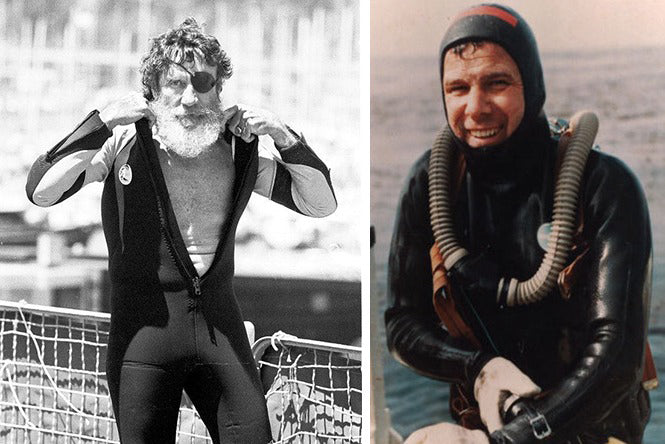
History of the neoprene wetsuit
Today, a neoprene wetsuit is as essential a piece of diving equipment as an air tank. However, that wasn’t always the case. As recently as the beginning of the 20th century, divers risked hypothermia and contact with sharp objects before the invention of the wetsuit.
A wetsuit is designed to help keep the body warm and protected and to prevent hypothermia. As the name implies, this neoprene suit contains small amounts of water in between its layers and helps to maintain the body’s core temperature as the outside water temperature drops.
The history of the wetsuit is an interesting story of technology that was developed out of necessity. Those who venture underwater need the best equipment available starting with their second skin: a wetsuit.
Contrary to what some may think, wetsuits do not work by keeping the diver dry; they are designed to let water into the suit. This thin layer of water is trapped between the diver and the suit, and warmed by body heat. That’s why it’s essential to have a nice, tight fit for a wetsuit. The thicker the neoprene, the warmer the suit will be for the diver. This thick neoprene material also protects commercial divers who work in environments that may contain sharp objects or even chemicals in the water.
History of the Wetsuit
The history of the diving suit began with an early 20th century invention in marine technology, the Mark V suit, which enabled divers to work at significant depths for the first time. It was developed for deep sea diving and salvage operations and was used by the U.S. Navy from 1916 to 1984. The history of the wetsuit began during World War II when Italian Frogmen started wearing wetsuits that were made of rubber. The discovery of neoprene emerged from World War II military research on various rubbers and plastics. In the spring of 1951, Hugh Bradner began working to improve the equipment for U.S. Navy Frogmen, which led to the development of the first Neoprene wetsuit. One of the longest-standing arguments is still over who is credited with the creation of the wetsuit. While many sources credit Bradner, two other men, Bob Meistrell, and Jack O’Neill, also claim to have invented it. In the 50’s, wetsuits had no inner lining and had to be coated with talcum powder; they were still delicate and were easily torn. Eventually, wetsuits were lined with nylon to decrease the sticky texture of the neoprene, but the nylon also decreased the flexibility of the wetsuit.
By the 1970’s wetsuit design featured double-backed neoprene sewn together, but this created many holes through the double layers, and left the suit open to the environment. New techniques were developed for sewing wetsuit seams including seam taping, seam gluing and seam binding. Eventually a technique called blind stitching was developed which uses a curved needle that does not to go all the way through the neoprene. This technique solved the problem of punctured holes in the neoprene while also creating a flat seam to make the wetsuit more comfortable.
Modern-day wetsuit
By 1989, Body Glove invented the non-zip wetsuit. New materials such as spandex and other thermoplastic materials were developed for warm water wetsuits, since these materials provide little thermal protection. Titanium was added to some wetsuits in the 90’s and is now is a regular feature of high-end wetsuits. When Titanium is woven throughout the wetsuit it helps retain body heat, which creates maximum thermal insulation. Other wetsuit types include the standard suit, the scuba suit, the hazmat suit and the hot water suit which are all used for different types of commercial diving work and environme
Leave a comment
Comments will be approved before showing up.


